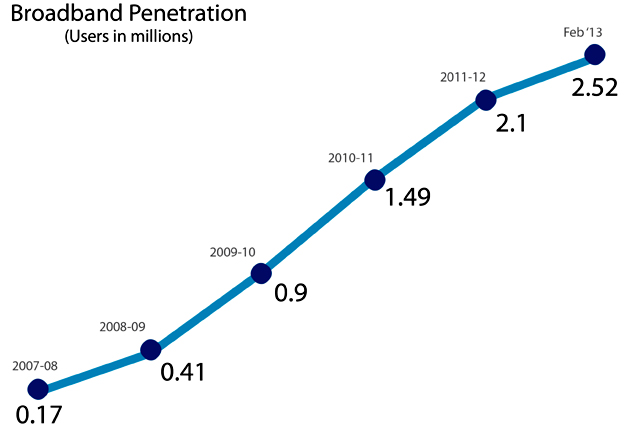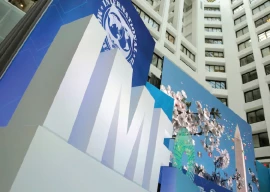As far as Pakistan’s mobile banking market is concerned, a simple look at the numbers can best explain why all five cellular mobile companies, operating in the country, and leading banks have been enthusiastic about this growing market.
The branchless banking managed more than 31 million transactions worth $1.5 billion in the quarter ended December 2012, registering a growth of 20% year-on-year, according to the State Bank of Pakistan. If one specifically looks at mobile banking, it has been growing at an annual rate of 37%, according to the SBP.
Despite an impressive growth rate, a large number of people with mobile phone subscription remain without access to financial services even today. Only 9% of the total population (190 million) has a mobile banking account against a mobile penetration that stands close to 70%.

Still in its infancy, the mobile banking segment has enormous room for growth since only 12% of the population has access to formal financial services while the number of mobile accounts is also very low.
Although mobile banking kicked off in Pakistan in 2009 with the launch of easypaisa – a mobile banking solution from Telenor and Tameer Microfinance Bank – it was only during last nine months or so that most telecom operators and banks entered this growing segment, an indication that the number of mobile accounts is likely to increase manifold in the next few years.
According to a recent study by the Boston Consulting Group, 35% of Pakistan’s adult population will be using mobile financial services by 2020, Monet – a mobile financial services company – told The Express Tribune in an email.
While banks and telecom operators consider it an additional but important revenue source, the central bank wants to use mobile banking as a tool to reduce cash from money supply and document the economy.
“Growth of branchless banking will help reduce currency circulation, document the economy and even create employment,” Muhammad Akhtar Javed, Additional Director at State Bank of Pakistan’s Banking Policy and Regulations Department told journalists at a workshop earlier this year.
Branchless banking is a regional phenomenon, it is growing in Bangladesh and India as well, according to Muhammad Raza, a research analyst at Elixir Securities. “Even if transaction amount is small, the market size is huge,” he said.
Despite impressive growth numbers, the analyst said, this market is still in its infancy. “The peak would be when you are able to avail a variety of services that a conventional bank offers but this will be done with time.”
Given the SBP’s ultimate goal is to move towards mobile wallets where people would like to make purchases through their mobile phones, mobile banking is likely to see further growth.
It is the positive outlook for the mobile banking market that global payments technology companies like Visa Inc are expanding their footprints in the country. Visa’s subsidiary Fundamo is in the process of launching its own mobile financial services platform in Pakistan.
“Only 12% of the population has access to formal financial services today against a mobile penetration nearing 70%,” Fundamo’s CEO Hannes van Rensburg told this correspondent. “This means that there is still enormous scope for growth in the market.”
Published in The Express Tribune, July 8th, 2013.
Like Business on Facebook, follow @TribuneBiz on Twitter to stay informed and join in the conversation.
COMMENTS (1)
Comments are moderated and generally will be posted if they are on-topic and not abusive.
For more information, please see our Comments FAQ
1732071267-0/lana-(2)1732071267-0-405x300.webp)
1727242355-0/Diddy-(1)1727242355-0-165x106.webp)

1732063440-0/elon-(3)1732063440-0-165x106.webp)













The continuing rise of digital consumers and the high costs of maintaining brick and mortar infrastructure will serve to grow this market. Banks are truly justified to celebrate and support this growth as long as they address potential problems in the consumer value proposition. In fact, according to a 2011 PwC survey, 62% of respondents said "the Internet is their preferred banking method.""* With the cost of bank transactions 20%* higher than a mobile transaction, banks are highly motivated to pursue this direction.
That said, consumers are also expressing deep concerns over privacy and security (63%**) when it comes to mobile transactions. While the value proposition regarding mobile is clear (convenience), unless concerns are addressed, growth rates might very well stall.
PwC Branch Strategy ** PwC Mobile Payments